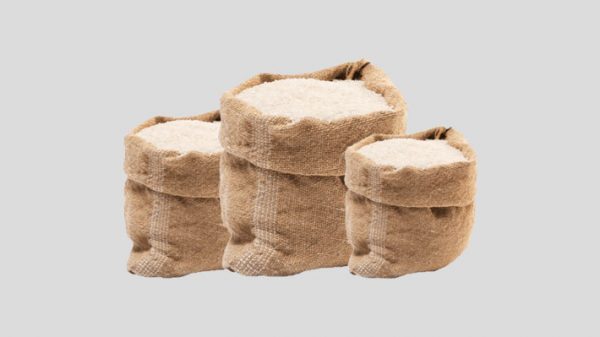Rice production to hit 40m tonnes by June

- Update Time : Sunday, December 11, 2022
- 105 Time View

There is no fear of a food crisis as the country’s rice production will reach 39.7 million tonnes by June next, according to a projection of the Bangladesh Rice Research Institute (BRRI).
The projection was made after calculating the rice production in Aus, Aman and Boro seasons in the country.
There was 3 million tonnes of Aus rice while there will be 16.3 million tonnes of Aman rice and the prediction of Boro production is 20.4 million tonnes.
A total of 25.13 million tonnes of rice will be needed to feed 17 crore people at 405 grams per person per day, the BRRI projection said.
Around 10.37 million tonnes of rice will be needed for other consumption like feed for livestock, said the projection at 26.12 percent.
“There’ll be no shortage of rice in the country until next June no matter how many estimation errors are there in the projection,” said BRRI Director General Shahjahan Kabir.
“We have to ensure that the supply chain is not disrupted under any circumstances. For that everyone should show utmost patriotism. Only then there’ll be a comfortable situation in the country’s food situation, especially in rice,” he said.
On the basis of the Aman yield in the past five years (2017 to 2021) considering weather elements (sunshine, solar radiation, temperature, relative humidity and cloud-free sky) and their effects on the yield, it can be seen that the Aman yield in 2022 will be 2.76 tonnes per hectare which is about 7 percent more than last year.
Accordingly, a production of about 1.63 crore tonnes of Aman rice is expected this year.
The Ministry of Agriculture set a target of 1.61 crore Aman rice from 59 lakh hectares of land in Aman season, said Shahjahan Kabir.
To achieve this target, effective initiatives have been taken to ensure all inputs – seeds, fertilisers, pesticides and supplementary irrigation, planting of saplings of right age at the right time and agronomic management at the right time, he said.
Aman is the second-highest cereal crop produced in Bangladesh after Boro. It is grown in the country during the rainy season. Country’s 37 percent of rice production comes from Aman while the rest 63 percent from Boro and Aus.















